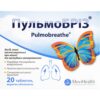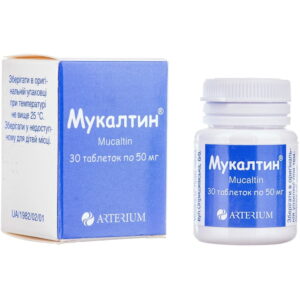No products in the cart.
Great news! The Canada Post strike is over! We’re resuming deliveries to Canada!
Excellente nouvelle ! La grève de Postes Canada est terminée ! Nous reprenons les livraisons vers le Canada !
Great news! The Canada Post strike is over! We’re resuming deliveries to Canada!
Excellente nouvelle ! La grève de Postes Canada est terminée ! Nous reprenons les livraisons vers le Canada !

Respix tablets covered with a shell 20 pcs
$21.89
Free Worldwide Shipping
Estimated delivery:
14 - 21 days
Categories: Cold and flu
Brand: Organosyn
Respix tablets are recommended for the treatment of acute and chronic diseases of the respiratory tract, accompanied by violation of bronchial secretion and secretion evacuation (including acute and chronic bronchitis, chronic obstructive pulmonary diseases, pneumonia, bronchiectasis, bronchial asthma, cystic fibrosis, laryngitis, tracheitis); in the period of preparation for bronchoscopy and after the study.
Respix tablets are recommended for use:
- for the treatment of acute and chronic diseases of the respiratory tract, accompanied by violation of bronchial secretion and secretion evacuation (including acute and chronic bronchitis, chronic obstructive pulmonary diseases, pneumonia, bronchiectasis, bronchial asthma, cystic fibrosis, laryngitis, tracheitis);
- in the period of preparation for bronchoscopy and after the study.
Composition
One tablet contains (active substances):
- acetylcysteine - 200 mg;
- ambroxol hydrochloride – 30 mg.
Excipients: microcrystalline cellulose, povidone, magnesium stearate, lactose, sodium starch glycolate, colloidal anhydrous silicon dioxide, hypromellose, talc, polyethylene glycol 6000, titanium dioxide (E 171), dye sunset yellow FCF (E 110).
Contraindication
- hypersensitivity to active substances or other components of the drug;
- peptic ulcer disease of the stomach and duodenum in the acute stage;
- hemoptysis;
- pulmonary hemorrhage.
Method of application
The recommended dose for adults and children over 12 years old is one tablet 3 times a day. Tablets should be taken after a meal, drinking a sufficient amount of liquid. The drug should not be used for longer than 4-5 days without consulting a doctor.
Features of application
pregnant
The drug is not recommended for use during pregnancy. Ambroxol and acetylcysteine penetrate into breast milk. In case of use of the drug, breastfeeding should be stopped.
Children
The drug is used for children aged 12 and over.
Drivers
There are no data on the effect of the drug on the speed of reaction when driving a motor vehicle or other mechanisms.
Overdose
Ambroxol was well tolerated after parenteral administration in doses up to 15 mg/kg/day and after oral administration up to 25 mg/kg/day. In the case of an overdose of ambroxol, no signs of severe intoxication were observed. Cases of short-term anxiety and diarrhea, hypersalivation have been reported. According to preclinical studies, overdose can lead to hypersalivation, nausea, vomiting and a decrease in blood pressure. An overdose of acetylcysteine can cause nausea, vomiting, and diarrhea. There is a risk of hypersecretion in children.
Treatment: symptomatic and supportive therapy.
Side effects
From the side of the cardiovascular system: tachycardia, arterial hypotension.
From the side of the nervous system: headache.
On the part of hearing organs: ringing in the ears.
On the part of the respiratory system: rhinorrhea, dryness of the respiratory tract, bronchospasm (mainly in patients with hyperreactivity of the bronchial system, associated with bronchial asthma).
Gastrointestinal tract: dry mouth, salivation, heartburn, nausea, vomiting, dyspepsia, stomatitis, abdominal pain, diarrhea, constipation, bad breath.
From the urinary system: dysuria.
From the immune system, skin and subcutaneous tissue: hypersensitivity reactions, including anaphylactic and anaphylactoid reactions, anaphylactic shock, rash, urticaria, reactions from the mucous membranes, angioedema, fever, shortness of breath, itching erythema, eczema, severe lesions skin: Stevens-Johnson syndrome, Lyell’s syndrome.
General disorders: edema.
When using acetylcysteine, the occurrence of bleeding, which was most often associated with the development of hypersensitivity reactions, was very rarely reported. There have been cases of decreased platelet aggregation, but there is no clinical confirmation of this.
Storage conditions
Store in the original packaging at a temperature not higher than 25 °C, in a place inaccessible to children.
Shelf life – 2 years.
Be the first to review “Respix tablets covered with a shell 20 pcs” Cancel reply
You may also like










Reviews
There are no reviews yet.